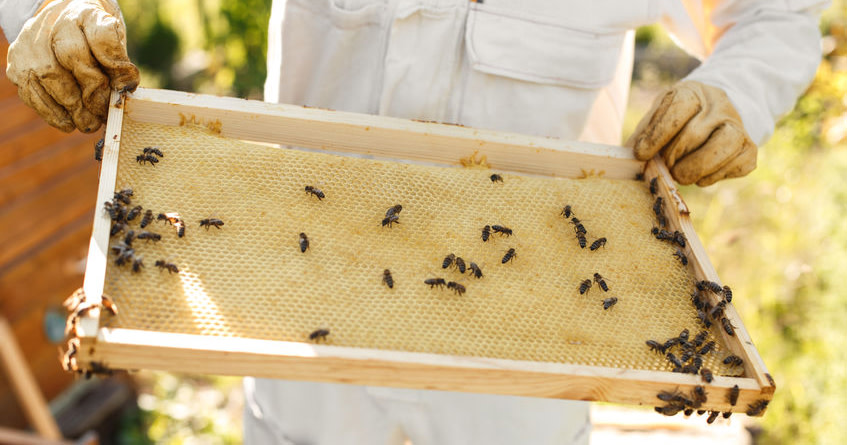
Buzz, Buzz — You Just Got Stung by the Office Bee
Jet skiing. Baking. Beekeeping. We have written before about some of the ways our teammates at Aha! recharge. I have to smile when I think about Andrew, our own software developer/beekeeper — working on code all morning before heading to the apiary in his garden. While he and his daughter enjoy caring for their hive, there is a different type of bee that is much more bothersome in most offices.
I am talking about the office bee. This exasperating insect makes a beeline for anyone in its way, stirring up trouble wherever it flies.
How do you spot this winged pest? There is not one single incarnation. It could be the coworker who takes more than they give, a teammate who flits from project to project (contributing very little along the way), or an aggressive manager who seems to enjoy lashing out with stinging barbs.
The office bee may take many forms, but it is not difficult to recognize when one is flying nearby. The constant buzzing will annoy you, and the threat of getting stung will make you want to wear full-body protection when you are around them.
Now I want to be clear — I am not talking about someone who loves to work on multiple projects at once or someone who is not afraid to disagree or defend their ideas. These types of teammates are vital to any healthy organization. But there is a difference between being assertive and being aggressive.
The one thing all office bees have in common is that they pester and sting teammates.
It is important to be aware of these types of co-workers and the harm they can cause so you can stay alert (or at least stay away from them). Here are the different types of office bee — and how their behavior can negatively impact the team:
The queen bee There is only one queen bee in a hive and there is no mistaking it. This co-worker is larger than life, flashy, and has cultivated a clique of loyal followers (worker bees) who feed with an endless supply of ammunition (gossip, insider knowledge) that the unofficial office royalty can use to stay in power.
The silent drone Drones are common at very large or dysfunctional organizations where it is easy for people to fly under the radar. This co-worker is mostly concerned with keeping the queen bee happy. But some are able to channel that single-minded focus into productive work — the problem is that the only thing that gets pollinated is the queen bee’s agenda.
The hardworking honeybee Industrious and capable of producing when it wants to, this buzzer tends to fly from project to project — without really considering the big picture. Sometimes in its zest for gathering, it takes ideas from others to repackage as its own. Other times, the narrow-minded focus prevents the team from making a real impact.
The combative yellow jacket The yellow jacket may look similar to the honeybee, but it is a more wicked version. This type of wasp is carnivorous and will repeatedly sting anyone who disagrees with it or calls out its antagonistic behavior. The worst part is, the stinger can trigger multiple times before this co-worker exits an organization.
The hostile hornet Another type of wasp that is larger and even more menacing than a yellowjacket, the hornet can be very dangerous — mostly because it surrounds itself with other toxic co-workers. If you stand up to one hornet, it releases pheromones to the rest of the nest that tell it to attack. This hive mentality hurts everyone.
The office bee can range from mildly irritating to outright scary, but there is no need to be paralyzed with fear.
Their stinging behavior is often a byproduct of a toxic work environment rather than an inherent character flaw. If you are working with one of these types of co-workers, remain calm. Showing that you are visibly bothered is like sweet nectar — it will only draw the bee nearer. If you must engage, protect yourself with allies (teammates who support you) and the knowledge that the bee will likely fly away in search of another colony.
But if you are working in an environment that resembles a swarm of killer bees, beware.
What other types of office insects have you encountered?
Our team is happy, productive, and hiring — join us!


